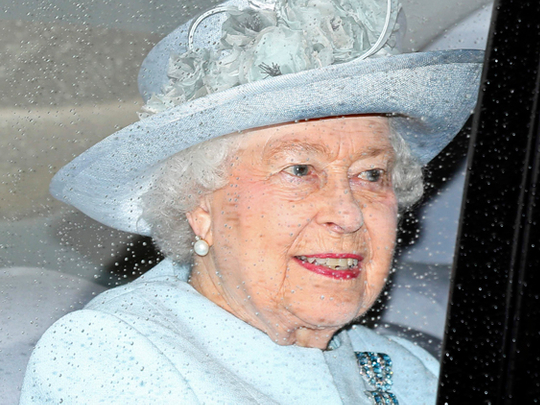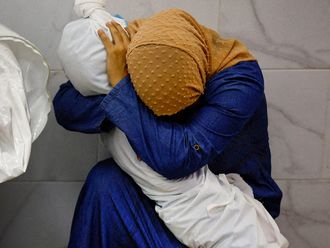
Dubai: Today, Britain’s Queen Elizabeth will quietly mark her 88th birthday at Windsor Castle. She may, as she did in 2006, go for a walk around the town, meeting well-wishers and accepting flowers from some Union Jack-waving enthusiasts.
If she lives to September 11 next year without abdicating, she will become the longest-serving monarch in British history, surpassing the reign of 63 years and 217 years of Queen Victoria, who became Queen in June, 1837.
Elizabeth celebrates two birthdays each year — her actual birthday on April 21 and her official birthday on a Saturday in June.
Official celebrations to mark sovereigns’ birthdays have often been held on a day other than the actual birthday, particularly when the actual birthday has not been in the summer. King Edward VII, for example, was born on November 9, but his official birthday was marked throughout his reign in May or June when there was a greater likelihood of good weather for the Birthday Parade, also known as Trooping the Colour.
With more than 98 per cent of Britons not knowing any other monarch, Elizabeth remains the most-photographed person in the world today as a result of her extensive travels and public appearances.
Today, at midday, a 41 gun salute in Hyde Park, a 21 gun salute in Windsor Great Park and a 62 gun salute at the Tower of London will mark her official birthday. If it’s a low key affair, more than 17,000 kilometres away, her great-grandson, George, is wowing the crowds Down Under.
Yesterday, the third-in-line to her throne was at Sydney Zoo with his parents, the Duke and Duchess of Cambridge. Today, as the formal boundaries between the British royal family and the public narrow, pictures of 9-month-old Prince George are posted daily on the Facebook pages of Prince William and Kate.
But, in fact, photography has been promoting the royal brand since its inception in the 19th century, as an exhibition on view at the Getty Centre shows. Fame may seem a 20th-century phenomenon, but Queen Victoria was the first public figure to exploit its promotional potential and the earliest — and least likely — international celebrity of the photographed world.
Two years after Victoria ascended the throne in 1837, William Henry Fox Talbot, who vied with Louis Daguerre as photography’s official inventor, managed through his cousin, a lady-in-waiting at the palace, to get his photographs into the hands of the 20-year-old queen. Victoria, who presumably had never seen anything like it before, looked at the botanical images of ferns and grasses, and an ethereal gauze ribbon that she declared “very curious.”
Countless official portraits of the queen circulated in the public sphere to symbolise the stature of the monarchy. Equally, a trove of personal portraits of her, Prince Albert and their nine children, which reside in albums and boxes at Windsor Castle, were distributed to establish Her Majesty not as a stern, prudish monarch but, unexpectedly, as a doting mother warmly engaged with her family.
These photographs constitute a surprising visual record of Queen Victoria herself behind the scenes.
Throughout the 19th century, the relationship between the queen and photography proved mutually beneficial. Early on, when it was still a magical experience to see true-to-life images fixed on paper, Queen Victoria and Prince Albert lent their official patronage to the Photographic Society of London (later the Royal Photographic Society), commissioned portraits and purchased work by the most prominent photographers of the era. The queen later recalled with fondness the evenings when she and Prince Albert had dined alone and looked at their photographs together. “It was such an amusement,” she wrote in her journal. “Such an interest.”
Now, eight generations after Victoria, little Prince George is carrying on the family’s business and love affair with photography.
—Compiled from agencies












